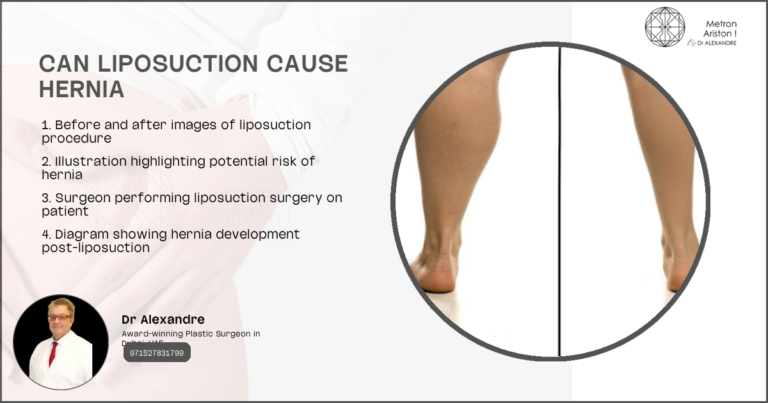What is liposuction?
Liposuction is a cosmetic surgical procedure designed to remove excess fat from specific areas of the body. It involves the use of a suction technique to extract fat deposits, typically from the abdomen, thighs, buttocks, arms, or neck. This procedure is often sought by individuals looking to improve their body contour and achieve a more sculpted appearance.
How liposuction affects body composition
Liposuction directly impacts body composition by removing fat cells from targeted areas. However, it is important to note that liposuction is not a weight loss solution but rather a body contouring method. The procedure does not significantly affect overall body weight but can result in a more proportionate and aesthetically pleasing figure.
Liposuction vs. traditional weight loss methods
Traditional weight loss methods, such as diet and exercise, focus on reducing overall body weight and improving health. In contrast, liposuction targets specific areas of fat that may be resistant to these methods. While traditional weight loss can lead to a reduction in fat cells, liposuction physically removes them, providing immediate results in the treated areas.
- Liposuction : Targets specific fat deposits, immediate results, not a weight loss solution.
- Traditional weight loss : Reduces overall body weight, improves health, gradual results.
Factors Influencing Weight Loss After Liposuction
Metabolism changes post-procedure
After liposuction, some individuals may experience changes in their metabolism. The removal of fat cells can alter the body’s metabolic rate, potentially making it easier or harder to lose weight. It is essential to monitor these changes and adjust lifestyle habits accordingly to maintain a healthy weight.
Dubai Liposuction Options
Dubai Liposuction Options include various techniques to remove excess fat from different body areas using advanced medical technology and skilled surgeons in luxurious clinics
Diet and exercise habits
Maintaining a balanced diet and regular exercise routine is crucial for continued weight management after liposuction. Healthy eating habits and physical activity help prevent the remaining fat cells from expanding and ensure long-term success.
Hormonal influences
Hormones play a significant role in weight management. After liposuction, hormonal changes can affect appetite, metabolism, and fat distribution. It is important to be aware of these changes and seek medical advice if necessary to maintain a healthy weight.
- Monitor metabolism : Adjust lifestyle habits as needed.
- Healthy diet and exercise : Prevent fat cell expansion.
- Hormonal awareness : Seek medical advice if needed.
Safe Weight Loss Strategies Following Liposuction
Recommended timeline for resuming exercise
Dr. Alexandre recommends waiting 4-6 weeks post-procedure before starting a weight loss regimen. This allows for proper healing and recovery, reducing the risk of complications. Gradually reintroducing exercise can help maintain the results of liposuction and promote overall health.
Nutrition guidelines for optimal recovery
Proper nutrition is essential for optimal recovery after liposuction. A balanced diet rich in vitamins, minerals, and protein supports the healing process and helps maintain energy levels. Avoiding processed foods and excessive sugar intake can also prevent weight gain.
Importance of hydration
Staying hydrated is crucial for overall health and recovery after liposuction. Drinking plenty of water helps flush out toxins, reduce swelling, and maintain skin elasticity. Proper hydration also supports metabolism and aids in weight management.
- Wait 4-6 weeks : Gradually reintroduce exercise.
- Balanced diet : Support healing and energy levels.
- Stay hydrated : Flush out toxins and reduce swelling.
Maintaining Liposuction Results Long-Term 
Lifestyle modifications for sustained results
To maintain liposuction results long-term, it is essential to adopt healthy lifestyle habits. This includes regular exercise, a balanced diet, and avoiding excessive weight gain. Consistency in these habits ensures that the benefits of the procedure are preserved.
Potential for fat redistribution
While liposuction removes fat cells from specific areas, it does not prevent new fat cells from forming in other parts of the body. Maintaining a stable weight is crucial to avoid uneven fat distribution and preserve the procedure’s results.
Regular follow-ups with Dr. Alexandre
Regular follow-ups with Dr. Alexandre can help monitor progress and address any concerns. These appointments provide an opportunity to discuss weight management strategies and ensure that the results of liposuction are maintained.
- Healthy lifestyle : Regular exercise and balanced diet.
- Stable weight : Prevent uneven fat distribution.
- Follow-ups : Monitor progress and address concerns.
Combining Liposuction with Other Weight Loss Techniques
Non-surgical fat reduction methods
In addition to liposuction, non-surgical fat reduction methods can help enhance body contouring results. Techniques such as CoolSculpting, ultrasound therapy, and radiofrequency treatments can target stubborn fat deposits without the need for surgery.
Complementary procedures for body contouring
Combining liposuction with other body contouring procedures, such as tummy tucks or thigh lifts, can provide more comprehensive results. These complementary procedures address excess skin and further refine the body’s shape.
- Non-surgical methods : CoolSculpting, ultrasound therapy.
- Complementary procedures : Tummy tucks, thigh lifts.
Realistic Expectations for Post-Liposuction Body Changes
Short-term vs. long-term results
In the short term, liposuction results may include swelling and bruising, which can take several weeks to subside. Long-term results become more apparent as the body heals and adjusts to its new shape. It is important to have realistic expectations and understand that final results may take several months to fully develop.
Potential for skin changes and contouring
Liposuction can lead to changes in skin texture and elasticity. In some cases, additional procedures such as skin tightening treatments may be necessary to achieve the desired contour. It is important to discuss these possibilities with your surgeon to ensure optimal results.
- Short-term results : Swelling and bruising.
- Long-term results : Final results take several months.
- Skin changes : Potential need for skin tightening treatments.
The Role of Body Mass Index (BMI) in Liposuction Outcomes
Ideal BMI range for liposuction candidates
Candidates for liposuction typically have a BMI within the normal to slightly overweight range. Individuals with a BMI that is too high may not be suitable for the procedure, as it is not intended for significant weight loss. A thorough evaluation by a qualified surgeon can determine if liposuction is appropriate.
Impact of BMI on post-procedure weight loss
BMI can influence the outcomes of liposuction and the ability to maintain results. Individuals with a higher BMI may need to adopt more rigorous weight management strategies to prevent weight gain and ensure long-term success. It is important to work closely with a healthcare provider to develop a personalized plan.
- Ideal BMI : Normal to slightly overweight range.
- Post-procedure weight loss : Rigorous weight management strategies.
Addressing Common Misconceptions About Liposuction and Weight Loss 
Liposuction as a weight loss solution
One common misconception is that liposuction is a weight loss solution. In reality, liposuction is a body contouring procedure that targets specific fat deposits. It is not intended for significant weight loss and should be combined with a healthy lifestyle for optimal results.
The myth of spot reduction
Another misconception is the idea of spot reduction, or the belief that fat can be selectively removed from specific areas through exercise alone. Liposuction can target specific areas, but traditional weight loss methods do not allow for spot reduction. A combination of liposuction and overall weight management is necessary for achieving desired results.
- Not a weight loss solution : Body contouring procedure.
- Spot reduction myth : Combination of liposuction and weight management.
Psychological Aspects of Weight Management After Liposuction
Body image and self-esteem
Liposuction can have a positive impact on body image and self-esteem. However, it is important to maintain realistic expectations and understand that the procedure is not a cure-all for body image issues. Ongoing self-care and a healthy mindset are essential for long-term satisfaction.
Developing a healthy relationship with food and exercise
After liposuction, developing a healthy relationship with food and exercise is crucial for maintaining results. This includes adopting balanced eating habits, finding enjoyable physical activities, and avoiding extreme dieting or over-exercising. A sustainable approach to weight management promotes overall well-being. Repeated Liposuction Procedures Risky home lipo can be dangerous for your health Trying to remove fat at home without a doctor is not safe
Airflow fat extraction uses strong air to remove fat from food This makes food healthier without changing how it tastes Liposuction limitations hips Liposuction can remove fat from hips but it cannot tighten loose skin or change bone structure
Chin lipo beverages are special drinks that claim to help reduce fat under the chin These drinks are marketed as a way to get a slimmer jawline without surgery
- Positive impact : Body image and self-esteem.
- Healthy relationship : Balanced eating and enjoyable activities.
Advanced Techniques for Optimizing Liposuction Results
Lymphatic drainage massage
Lymphatic drainage massage can help reduce swelling and promote healing after liposuction. This specialized massage technique encourages the movement of lymph fluid, reducing the risk of complications and enhancing overall recovery.
Compression garments and their benefits
Wearing compression garments after liposuction can provide several benefits, including reducing swelling, supporting the healing process, and improving skin elasticity. These garments help maintain the new body contour and ensure optimal results.
- Lymphatic massage : Reduces swelling and promotes healing.
- Compression garments : Support healing and improve skin elasticity.
By following these guidelines and understanding the factors influencing weight loss after liposuction, individuals can achieve and maintain their desired body contour. It is essential to adopt a healthy lifestyle, seek professional advice, and have realistic expectations for long-term success.
FAQ’s
How much weight can you lose with liposuction?
According to the American Society of Plastic Surgeons, liposuction can remove up to 11 pounds of fat, but it is not a weight loss solution. The primary goal of liposuction is to improve body contour and target specific fat deposits.
Is it easier to lose weight after liposuction?
While liposuction removes fat cells, it doesn’t guarantee easier weight loss afterward. Maintaining a healthy lifestyle is crucial for continued weight management. Regular exercise and a balanced diet are essential to prevent remaining fat cells from expanding.
How long after liposuction can I start losing weight?
Dr. Alexandre recommends waiting 4-6 weeks post-procedure before starting a weight loss regimen to allow for proper healing and recovery. Gradually reintroducing exercise and healthy eating habits can help maintain the results of liposuction.
Can fat return after liposuction?
While fat cells removed during liposuction don’t regenerate, remaining fat cells can expand if a healthy lifestyle isn’t maintained. It is important to continue practicing healthy habits to prevent weight gain and preserve the procedure’s results.
What happens if you gain weight after liposuction?
Weight gain after liposuction may lead to uneven fat distribution. Maintaining a stable weight is essential for preserving the procedure’s results. Adopting a healthy lifestyle can help prevent weight gain and ensure long-term success.








